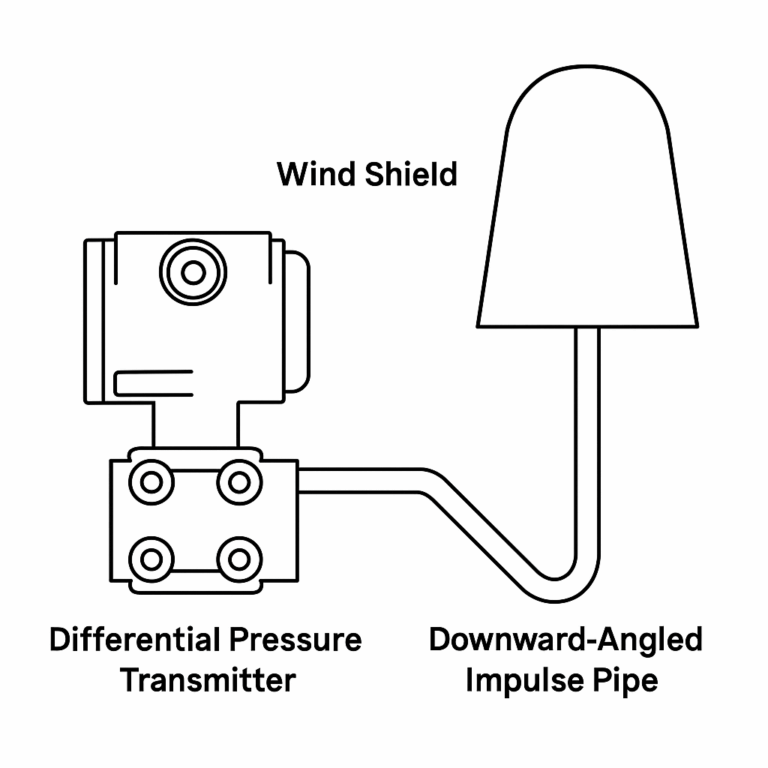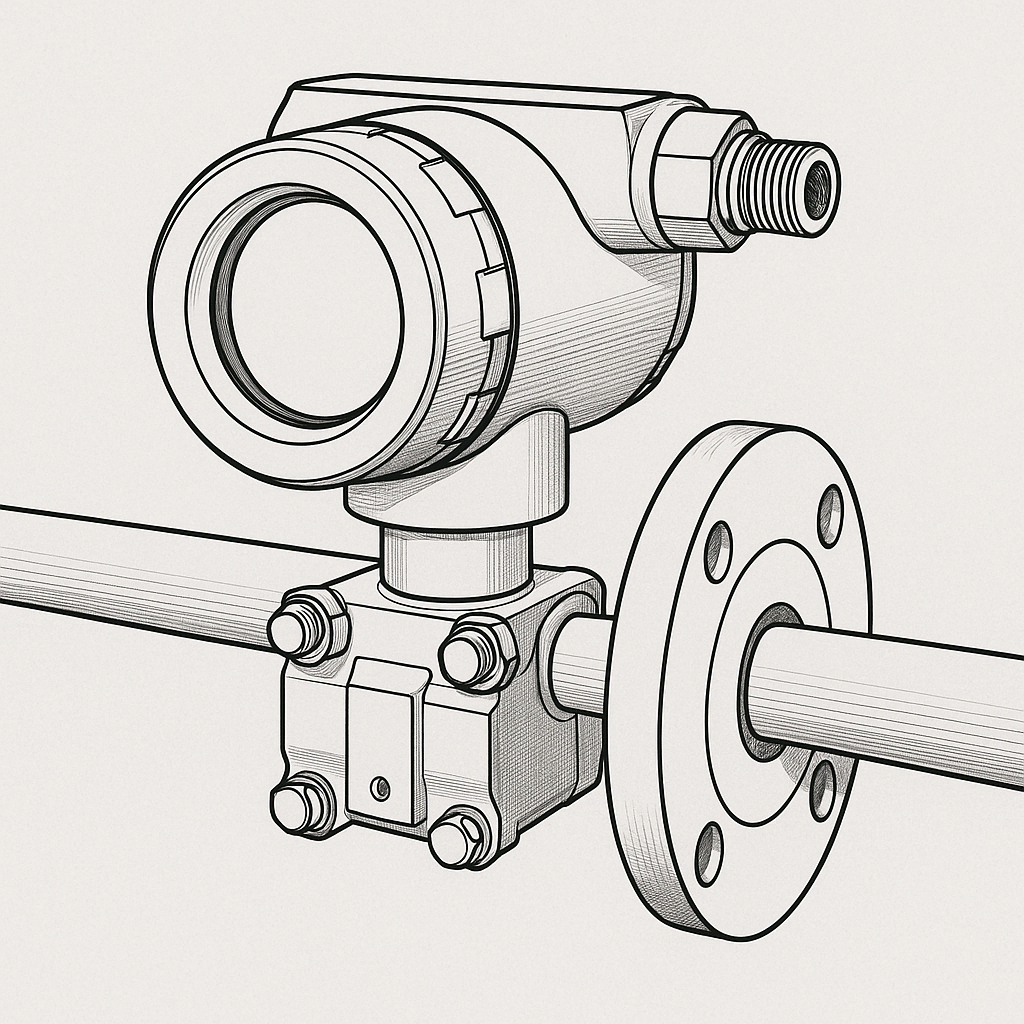Differential pressure transmitters with small measuring ranges are highly sensitive to environmental interference. When installed in wind-exposed areas, strong airflow can create pressure on the negative-pressure port, resulting in inaccurate readings and compromising measurement accuracy.
To mitigate the influence of external airflow and environmental fluctuations, it is recommended to install a downward-facing impulse line and a wind shield on the negative-pressure side of the differential pressure transmitter.
Below is a schematic diagram showing the typical installation of a wind shield on a differential pressure transmitter:

🔧 Key Functions of the Wind Shield
1. 🌀 Minimize Wind Pressure Interference
In outdoor or ventilated areas, the wind shield can effectively cover the pressure tapping point, blocking direct air impact. This prevents pressure fluctuations caused by gusts or turbulent airflow, thereby improving the accuracy and stability of pressure measurements.
2. 🌡️ Stabilize the Measurement Environment
By forming a relatively enclosed zone around the tapping port, the wind shield reduces the impact of temperature swings, humidity changes, and other environmental variables, helping to maintain consistent transmitter performance.
3. 🐝 Prevent Dust, Contaminants, and Insects from Entering
In dusty or contaminated environments, fine particles can clog or partially block the pressure port, resulting in signal deviation. Moreover, insects such as mud wasps often build nests inside tapping ports using mud, leading to total blockage or internal corrosion over time.
Potential risks include:
Insect debris or droppings causing corrosion to diaphragm components;
Live insects scratching or damaging sensing elements;
Measurement drift or transmitter failure due to partial obstruction.
Installing a wind shield helps avoid these issues and extends the life span of the device by protecting internal components from both physical and chemical damage.

✅ Summary
The wind shield acts as a “guardian” for differential pressure transmitters by:
Reducing wind-induced measurement errors,
Isolating the tapping point from environmental fluctuations,
Preventing foreign matter intrusion.
For accurate and stable measurement, especially in sensitive applications, wind shields are not optional—they are essential components of the installation design.
